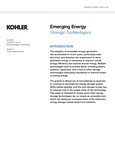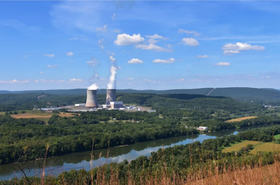US energy company NextEra has 7GW of data center and tech industry contracts in place.
3GW is for facilities already in operation, with another 4GW in the pipeline, the company revealed during the company's Q2 2024 earnings results call with analysts this week.
"There is no escaping the fact that these are very large numbers and numbers that I don't think any utility across the industry has seen before," NextEra Energy Resources head Rebecca Kujawa said of the industry-wide demand for data center power.
"And so it's going to take some time not only to rationalize that and figure out how you address it, but also to procure and bring online the megawatts and the transmission over the long term that is going to be required to serve this demand if it ends up being as strong as we see it and we think it might be."
Kujawa said that the company was lining up projects into 2028 to support data center demand.
Hyperscalers, in particular, are keen to use wind, solar, and battery storage and are moving from pure virtual power purchase agreements to contracts closer to the data center that "can come online at the same time."
Projects that are already in service "are likely to be more heavily weighted towards wind," Kujawa said. "And then, in terms of the backlog, they're more weighted towards solar and storage, but I expect that to even out over time, particularly as these products get more deliberately balanced with new data center demand."
Asked about a potential government change to one less supportive of renewables, NextEra Energy CEO John Ketchum said that tax incentives were hard to overturn and favored Republican states.
"Renewables create jobs, they create a property tax base that transforms rural communities. Renewables are energy independence, it's electricity generated from the sun and the wind, it's not subject to fuel price volatility."
Ketchum added: "Low-cost renewables are also bringing power bills down, which attract new investment from data centers, semiconductor chip manufacturers and other sectors that are looking to invest in the US. And low power bills can really dictate which states they select to make those investments in. And tariffs are going to further drive investment in the US, and with industrial growth across sectors, some of that driven by tariffs, power demand is only going to go up from here.
"And our country is going to need low cost, fast deploy electricity more than ever. And renewables are the quickest to market and the lowest cost option in almost every state. Otherwise, we're going to slow down and curtail economic growth in our own country, and the credits all flow directly to customers in the form of lower power prices."







